The evolution of the nuclear triad: prospects for the development of the marine component of the strategic nuclear forces of the Russian Federation
As we said earlier, the historically most important component of the strategic nuclear forces (SNF) of the USSR, and then the Russian Federation, has always been strategic missile forces (Strategic Rocket Forces). In the USA, the development of strategic nuclear forces began with aviation component - strategic bombers and free-fall nuclear bombs, but they had bases in Japan and continental Europe, which allowed them to attack targets deep in the territory of the USSR. The capabilities of the USSR in this regard were much more modest, therefore, a guaranteed nuclear strike against the United States became possible only after the appearance of intercontinental ballistic missiles (ICBMs) on combat duty.
To this day, the Strategic Missile Forces retain a leading role in ensuring nuclear deterrence, as it is likely to remain in the medium term. The aviation component was almost always the least significant in the composition of the strategic nuclear forces of the USSR / RF, which is explained by the vulnerability of carriers - strategic bombers, missile carriers both at basing aerodromes and on extension routes to the missile launch point, as well as the vulnerability of the main weapons strategic bomber missiles - subsonic cruise missiles with a nuclear warhead (NWF). However, the use of strategic aviation as the main weaponAir Launch ICBMs maybe if it does not increase the combat stability of the aviation component of the strategic nuclear forces, then turn it into a serious threat to a potential enemy.
The naval component of the strategic nuclear forces of the Russian Federation has always been catching up with respect to the Strategic Missile Forces. On the one hand, the ability of nuclear submarines with ballistic missiles (SSBNs) to hide in the depths of the ocean ensures their highest survival rate enemy disarming blow, which determined the role of SSBNs as a leading component of the US strategic nuclear forces, and in fact the only component of the strategic nuclear forces of Great Britain and France. On the other hand, secrecy and the presence of powerful fleetcapable of providing cover for deployment and patrol areas SSBNs. The United States, Great Britain and France have all this (but in the context of NATO), but not China, therefore, the sea component of its strategic nuclear forces, like the aviation, are extremely insignificant in comparison with the ground component.
If we talk about the USSR / Russia, then the USSR had a powerful fleet capable of providing deployment for the protection of patrol areas of SSBNs. It is believed that Soviet submarines for a long time were inferior in terms of noise to the submarines of a potential enemy, but by the mid-80s this problem was solved.
Everything is much more complicated with Russia. If the noise, as well as the capabilities of the sonar systems of the latest Russian strategic missile submarine cruisers (SSBNs) can presumably be considered acceptable, then the ability of the Russian Navy to ensure their deployment and cover patrol areas can be called into question. Nevertheless, in comparison with the strategic nuclear forces of the USSR, the relative share of nuclear warheads stationed on naval carriers has even increased.
Let us try to evaluate the consequences of this decision and the possible directions of the evolution of the marine component of the Russian strategic nuclear forces in the medium term.
Locked in the Bastions
SSBNs can be divided into two main states - when she is on combat duty, and when she is in the base. The time spent SSBNs on combat duty is determined by the coefficient of operational voltage (KOH). For American SSBNs, KOH is about 0,5, that is, a submarine spends half of its time on duty. At the USSR Navy, KOH was always lower, and most likely this situation persists at the moment. Suppose that on combat duty there is 30% -50% of the SSBN. In this case, the remaining 50-70% are in the base and can be destroyed by a sudden disarming strike, even by non-nuclear means, however, for this purpose they will not spare a dozen nuclear warheads. Now this will allow the enemy to destroy about 350-500 Russian nuclear warheads with one blow - the ratio is not at all in our favor.
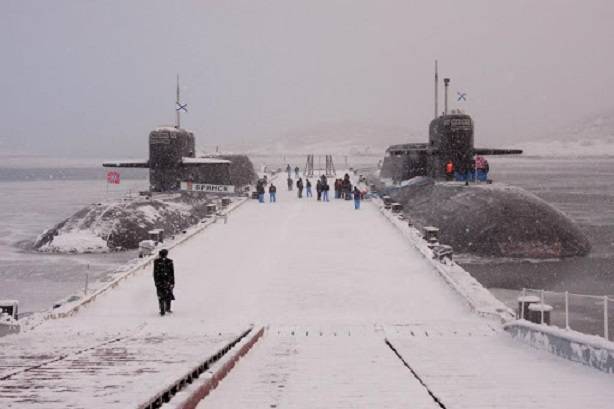
The SSBNs on combat duty may be hiding in the depths of the oceans, but for this they must be safely deployed — leaving the base, as well as covering patrol areas. This requires a powerful surface fleet, anti-submarine aviation, as well as multi-purpose submarine hunters to accompany the SSBN. The Russian Navy has serious problems with all this. To carry out an SSBN’s entry into the sea without cover is the same as knowingly giving them to the enemy for destruction.
Another option is to create “bastions” for the SSBN - conditionally “closed” water areas tightly controlled by the Russian Navy, taking into account its limited capabilities. This immediately raises the question of how much the bastion is controlled in reality, and how quickly it can be “hacked” by the enemy. But most importantly, the adversary’s knowledge that the Russian SSBNs “graze” in these bastions will allow him to place in sufficient proximity a sufficient number of missile defense ships capable of intercepting the launch of ICBMs after them.
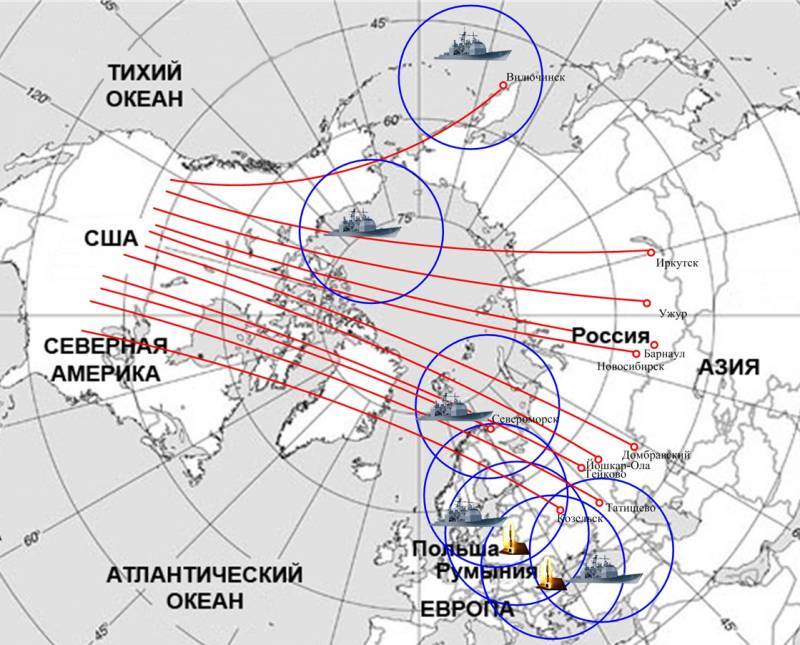
We can’t stop them. In peacetime, attacking the enemy’s fleet in neutral waters is a declaration of war, and if the enemy inflicts a sudden disarming strike, there will be no time to suppress his fleet.
Based on the foregoing, it can be assumed that the only effective use of SSBNs is to patrol them in various parts of the world’s oceans, where it is impossible to predict their appearance, and deploy missile defense ships in advance. But this brings us back to the problem of covert deployment and cover of patrol areas. It turns out a vicious circle, and is there a way out of it?
Existing reality
The naval component of the strategic nuclear forces of the Russian Federation in the near future should be the SSBN of project 955 (A) Borey with ballistic missiles of submarines (SLBM) Bulava. Presumably, their characteristics make it possible to effectively hide from the enemy in the depths of the ocean, but at least this does not eliminate the problem of a safe exit from basing places.
Huge amounts of money have been invested in the Borey / Bulava program 955 (A), the total number of Boreev in the Russian Navy can be up to 12 units. Moreover, the number of multipurpose nuclear submarines (ICAPL) of project 885 (M) “Ash” is being conducted at a much slower rate. In Russia, a unique situation is emerging when the SSBN in the fleet will be larger than the ICAPL. Is it possible to build ICAPL at an accelerated pace, interrupting the construction of the SSBN? Far from a fact - different shipyards, different design bureaus. Reconfiguration to another type of submarine will require a lot of time and money.
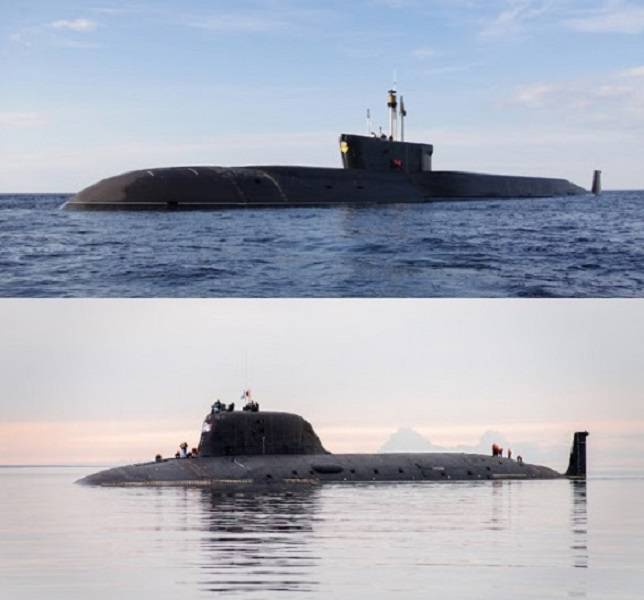
But there is an option - the continuation of the construction of the Boreev series in the PLARK variant - an atomic submarine with cruise missiles. Earlier we considered this option., and they saw that SSBNs can be very useful for the Russian Navy both for counteracting large carrier and ship groupings of a potential enemy, and for delivering massive strikes against the enemy’s armed forces and infrastructure. In fact, Borey-type SSGNs will be able to replace the relatively highly specialized Project 949A SSGNs at a new level (some of which will probably be upgraded to more universal 949AM SSGNs). Now we can say that the possibility of building, at least in a limited series, the SSBN of project 955K is actually being considered by the Russian Navy.
Continuing the construction of SSBNs on the basis of project 955 will not only equip the Navy with sufficiently effective combat units, but also reduce the cost of each individual submarine due to the greater serialization of construction. In addition, an important advantage of constructing SSBNs / SSBNs on the basis of one project (955A) will be the almost complete indistinguishability of their visual and acoustic signatures for the enemy. Accordingly, by organizing paired access to combat duty SSBNs and SSBNs, we double the load on the enemy’s Navy to track SSBNs. Any resources are not unlimited, and it is far from a fact that the US / NATO will have the strength to reliably track all SSRN / SSRN of the Russian Navy.
How effective is this solution? Let's face it - creating a powerful balanced fleet is better, but you have to work with what you have. The construction of the SSBN of project 955 (A) has been debugged by industry and is proceeding without delay, it can be expected that the SSBNs of project 955K will be built at no less high rates.
Another factor that can significantly increase the load on the enemy’s navy can be an increase in KOH to a level of at least 0,5. For this, it is necessary to ensure prompt maintenance and scheduled maintenance of SSBNs / SSBNs in the places of basing, as well as the presence of two replaceable crews for each submarine.
In turn, the enemy, in order to track the exit and escort of our SSBNs, will have to keep several multi-purpose submarines on duty near Russian bases all year round. In the absence of information about when and how many of our SSBNs can simultaneously go on a hike, the number of US / NATO nuclear submarines required for guaranteed support should be 2-3 times the number of our SSBNs.
If you can scrape together 14-21 submarines at 7 US / NATO SSBNs, then for 12 SSBNs you need already 24-36 submarines. In the case of the construction of submarines on the basis of the SSBN in the amount of 6/12 units, the number of nuclear submarines necessary for their support will be 54/72 - 72/96 units, which is completely unattainable. Of course, aviation and the surface fleet can also be involved in tracking SSBNs, but in this case we will at least have an understanding that the enemy’s unhealthy activity is being conducted in the area of patrol of the SSBN, which will allow us to take appropriate measures.
Thus, if project 955 (A) SSBNs become the basis of the naval component of the strategic nuclear forces, then project 955K SSBNs will become an effective weapon Strategic Conventional Forceswhich, unlike strategic nuclear forces, can and should be used in current and future limited conflicts. A joint deployment of SSBN / SSBNs in combination with interchangeable crews will significantly complicate the tracking of SSBNs / SSBNs by the enemy and increase the likelihood of their successful concealment in the depths of the oceans.
Medium term
Presumably, the promising new hope for the Russian Navy should be the promising ICAPLs of the Husky project (Laika ROC), which should be issued in two versions - a hunter for enemy submarines and a carrier for cruise / anti-ship missiles.
Previously, information appeared periodically on the network that the Husky project would be even more universal, and not only cruise missiles, but also ballistic missiles, which would be installed on a modular basis, could be used on it.
In part, this information is confirmed now - it follows from the documents distributed at the meeting on the development of shipbuilding held in the Federation Council in 2019:
«
The materials do not indicate what kind of ballistic missiles they will be, possibly the “numbed” version of the Iskander complex, which has already received registration on airplanes in the form of the Dagger complex.
Logically developing the option of building a large RPKSN / PLARK series on the basis of a single project 955 (A / K), it can be assumed that an even more effective solution would be to create a single version of the ICAPL / PLARK / RPKSN on the basis of the Husky project. In this case, any Russian Navy submarine on duty can and should be considered the enemy’s Navy as a carrier of nuclear weapons. A situation of uncertainty will arise as to whether the tracked nuclear submarine is a nuclear weapon carrier or a multi-purpose hunter. With a sufficient number of universal nuclear submarines, identification of nuclear weapons carriers among them will become practically impossible.
The question arises, is it possible to make such a universal nuclear submarine, since the SSBNs are significantly larger in size than the ICLM? Let's try to consider this issue in more detail.
Missiles and dimensions
В stories The construction of NATO SSBNs and the Russian Navy can distinguish several significant projects that characterize the possibility of building SLBMs and SSBNs of various sizes.
At one end of the scale are the giant Soviet SSBNs of project 941 “Shark” (“Typhoon”) with an underwater displacement of 48 tons! Their size is not a consequence of the gigantomania of the leadership of the Navy of the USSR, but only a consequence of the inability of the Soviet industry to create at that time SLBMs with the required characteristics, in acceptable dimensions. The R-000 Variant SLBMs placed on Project 941 SSBNs had a launch weight of about 39 tons (with a launch container) and a length of about 90 meters. Moreover, the characteristics of the R-17 SLBMs are inferior to the characteristics of the American Trident-39 SLBMs, whose mass is only 2 tons with a length of 59 meters.
At the other end of the scale, you can put the American Lafayette SSBNs, or rather their third iteration - the Benjamin Franklin SSBNs, with an underwater displacement of only 8 tons, which makes them smaller than most modern Soviet / Russian multi-purpose submarines, whose underwater displacement often exceeds 250 thousand tons.
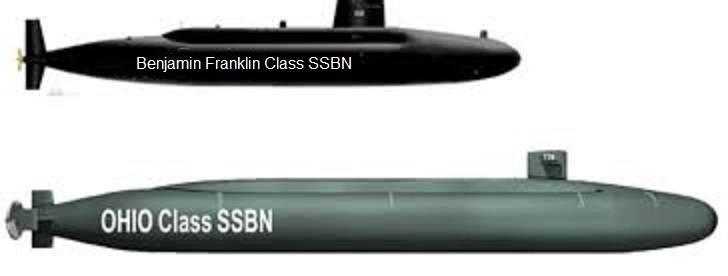
If at first boats of this type carried 16 Poseidon SLBMs with a flight range of up to 4 kilometers, then they were later re-equipped with Trident-600 SLBMs, the maximum flight range of which was already 1 kilometers. The length of the SLBM Trident-7 is only 400 meters, with a mass of 1 tons. According to its characteristics, the latest Russian SLBM “Bulava” is 10,4 meters long and weighs 32 tons.
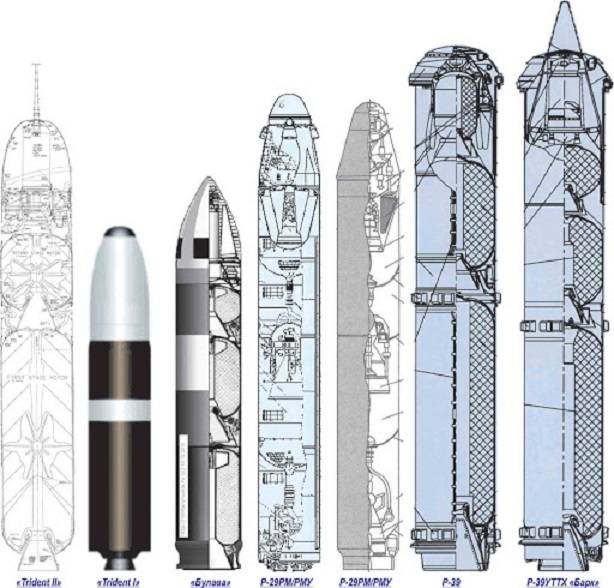
Currently, the United States plans to deploy a hypersonic weapon with a conventional warhead on board the Virginia-type strike nuclear submarines (the deployment of this weapon on larger carriers, the Ohio-class submarine, was previously discussed). Upgraded Virginia-type submarines add the Virginia Payload Module (VPM), capable of accommodating up to 28 cruise missiles, increasing their total number on board the submarines to 40 units.
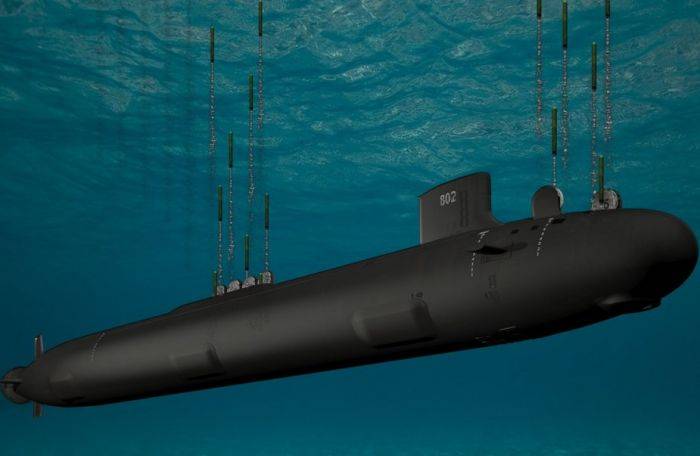
By 2028, it is planned to deploy a CPS hypersonic complex in the VPM module, which includes a C-HGB hypersonic glider with a conventional warhead on a two-stage launch vehicle. The biconical hypersonic glider of the CPS project is also supposed to be used in the LRHW and HCSW projects of the ground forces and the US Air Force.
The estimated LRHW range can reach 6000 kilometers (according to other sources 2300 kilometers) at a block speed of more than five Machs, respectively, the Virginia CPS hypersonic complex can have a similar range.
The length of the existing anti-ship missiles (ASM) 3M55 P-800 Onyx is about 8-8,6 meters, the length of the advanced ASM 3M22 Zircon is estimated to be 8-10 meters, which is comparable to the length of the Trident SLBMs created at the end of 70 years of the XX century - more than 40 years ago.
Based on this, it can be assumed that a promising SLBM with a range of about 8000 kilometers can well be created in dimensions that can be placed on the promising universal nuclear submarines of the Husky project or even on the upgraded ICAPLs of the 885 Ash project.
Of course, the number of even small-sized SLBMs on board the ICAPL will be much less than on a specialized SSBN, presumably no more than 4-6 units. During the construction of universal nuclear submarines in a large series of 60-80 units, of which 20 units will be equipped with SLBMs of 3-6 nuclear warheads per SLBM, the total number of nuclear warheads in the marine component of the strategic nuclear forces will be about 240-720 nuclear warheads.
Conclusions
The creation of a universal nuclear submarine capable of carrying all types of weapons will make it possible to ensure maximum stability of the naval component of the strategic nuclear forces without involving additional fleet forces. None of the existing and potential adversaries will be able to physically track all the nuclear submarines on duty, and the lack of information about which of them carries SLBMs will not guarantee the destruction of them during a sudden disarming strike. Thus, the naval component of the strategic nuclear forces will make a significant contribution to deterring the likely enemy from delivering a sudden disarming strike.
An even more significant advantage of deploying SLBMs on universal nuclear submarines is the maximum realization of the offensive capabilities of the Navy. For this, a promising SLBM should be able to launch from a minimum range of about 1000-1500 km. Moreover, if the dimensions of a promising SLBM do not allow it to provide a firing range that allows shooting “from the pier”, that is, their maximum range will be, for example, about 6000 kilometers, then this is absolutely uncritical in the context of deploying such SLBMs on universal nuclear submarines. In any case, standing at the SSBN pier, not a tenant, when the enemy inflicts a sudden disarming strike, but the desire of Russian nuclear-powered submarines, equipped with SLBMs with a short flight time, to the shores of the United States, will rightly be regarded by the latter as a threat of a decapitation strike on them themselves. Accordingly, to eliminate this threat they will have to use significant anti-submarine and anti-missile forces on their own, and not on our borders. And this, in turn, will simplify the deployment of our nuclear submarines, reduce the threat of a sudden disarming strike, and reduce the threat of a missile defense system for the ground component of the Russian strategic nuclear forces.
Thus, the promising naval component of the strategic nuclear forces will not only have significantly greater survival, in the context of the possibility of an enemy delivering a sudden disarming strike, but will also allow the situation to be turned upside down, forcing the enemy to reduce their offensive capabilities, due to the redistribution of efforts on defense from a possible similar blow from our side.
Teeth for nuclear submarines
There is a possibility that an increase in the number of sensors in the oceans will cause submarines to increasingly lose their secrecy, which will require them to quickly switch from stealth mode to aggressive combat mode. Proceeding from this, it is necessary to maximize the capabilities of both the SSBN / SSBNs and the ICLM in countering surface and submarine forces, as well as enemy aircraft. This is a big and interesting topic, which we will return to in a separate article.
In the next article, we will consider the “assembly” of the ground, aviation, and sea components of promising strategic nuclear forces, the correlation of forces, and ways of saving.
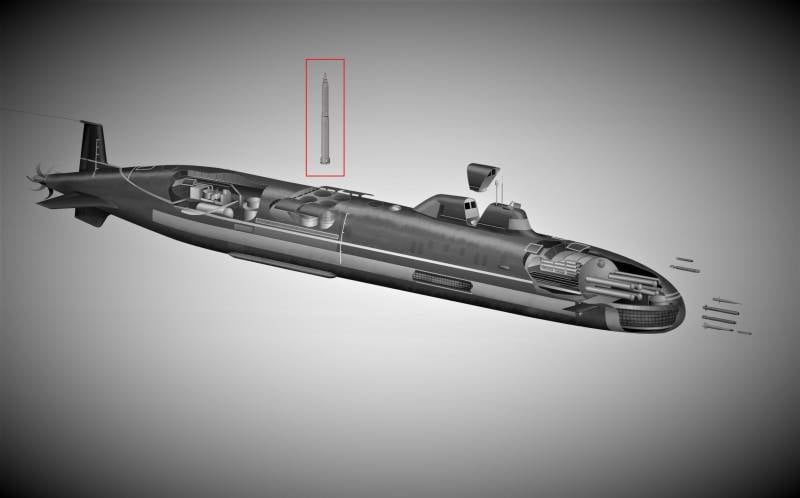
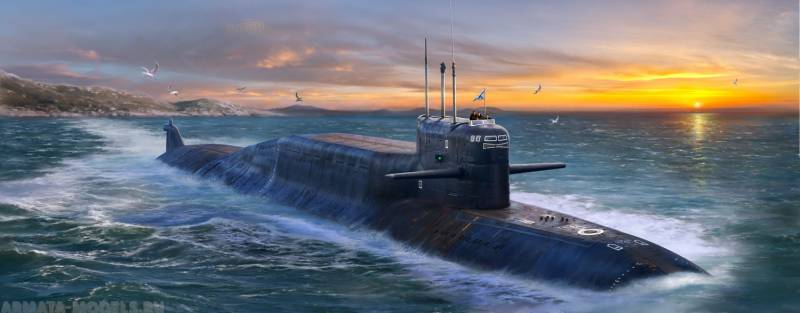
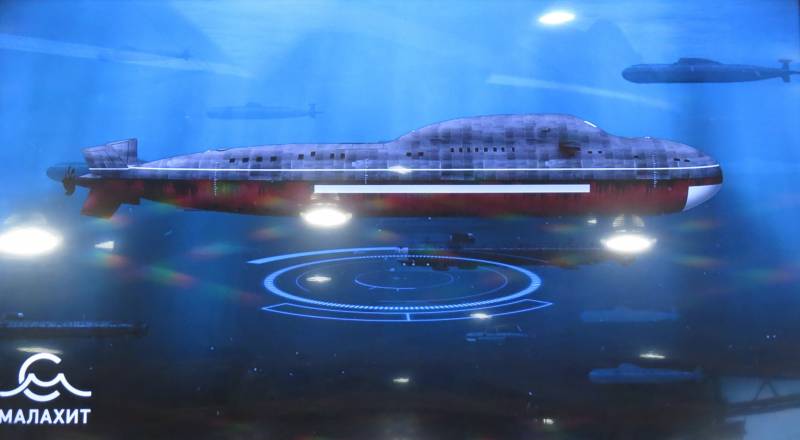
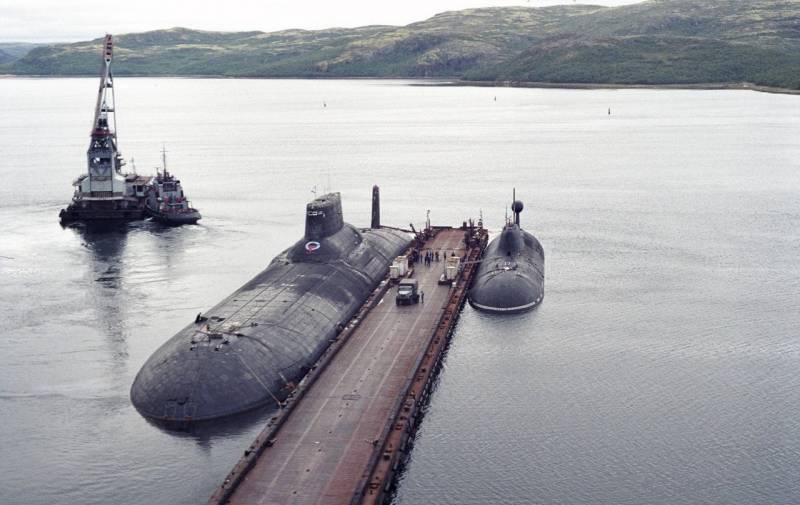
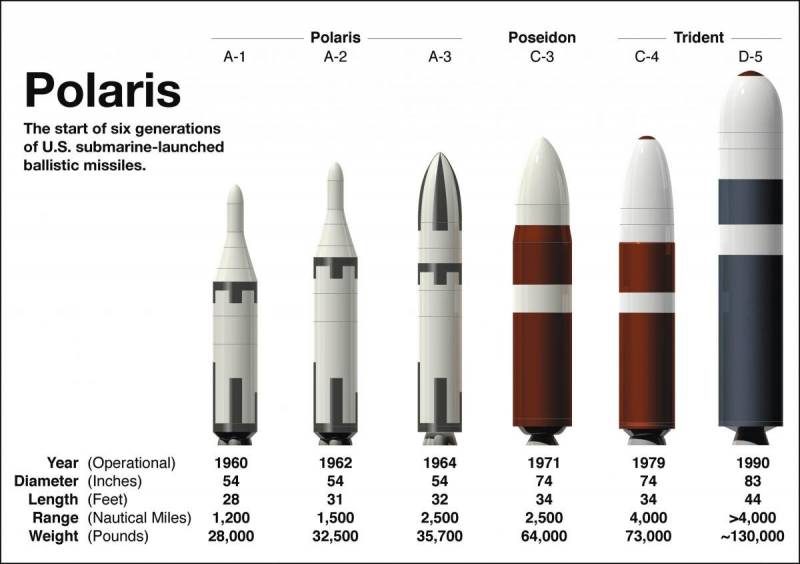
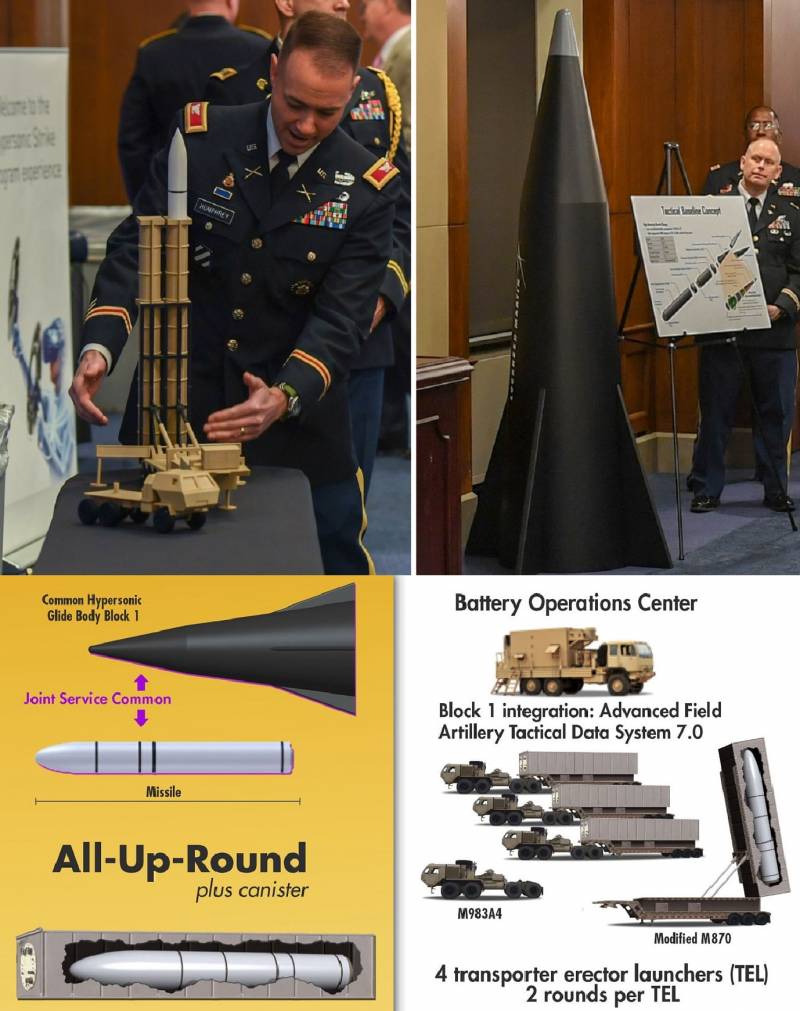
Information